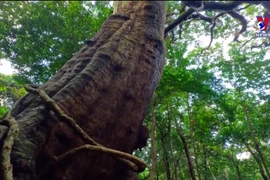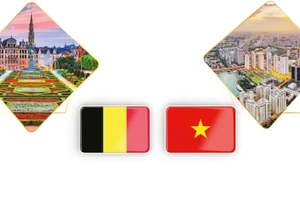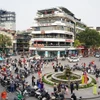Hanoi (VNA) – Vietnam is working to enhance the role and strengthen the connectivity of its national parks that are part of the ASEAN Heritage Parks (AHP) network.
The AHP initiative, established through the ASEAN Environment Ministers' Declaration on Heritage Parks in 2003, aims to comprehensively conserve the region’s unique and vital ecosystems.
The ASEAN Heritage Parks are designated as protected areas of regional significance, selected specifically to preserve the distinctive ecosystems that define the ASEAN region. They are designed not only to raise awareness and foster pride in ASEAN’s rich natural heritage but also to encourage cooperation among ASEAN countries in safeguarding shared natural resources. Through this network, ASEAN nations collaborate to protect biodiversity, preserve cultural and educational values, and ensure the sustainable use of ecosystems.
Vietnam boasts the largest number of ASEAN Heritage Parks in Southeast Asia, with a total of 12. They include Hoang Lien National Park (Lao Cai, Lai Chau), Ba Be National Park (Bac Kan), Vu Quang National Park (Ha Tinh), Bai Tu Long National Park (Quang Ninh), Ngoc Linh Nature Reserve (Kon Tum), Chu Mom Ray National Park (Kon Tum), Kon Ka Kinh National Park (Gia Lai), U Minh Thuong National Park (Kien Giang), and Bidoup – Nui Ba National Park (Lam Dong), Lo Go – Xa Mat National Park (Tay Ninh), Con Dao National Park (Ba Ria – Vung Tau), and Bach Ma National Park (Hue).
The ASEAN Heritage Parks Programme has set out three primary objectives. First, it seeks to establish agreements between the parks and their stakeholders to prioritise and protect areas facing the greatest biodiversity threats. Second, the programme aims to build the capacity of park management agencies to raise awareness about conservation and engage local communities. This includes providing training, facilitating networking, and promoting the exchange of knowledge and best practices. Finally, it aims to increase local community involvement in the management and protection of these parks.
To achieve these goals, Vietnam's ASEAN Heritage Parks are developing comprehensive management plans and sustainable forest management practices. The parks are also focusing on enhancing the capacity of management teams and stakeholders. This includes implementing monitoring and evaluation systems, increasing community participation, and ensuring sustainable financial support for the parks.
In 2024, the Ministry of Agriculture and Rural Development’s International Cooperation Department launched a project to strengthen the network of Vietnam's ASEAN Heritage Parks for the 2023-2025 period. This initiative, part of the National Biodiversity Action Plan, aims to create stronger connections among Vietnam’s ASEAN Heritage Parks, in line with the Environmental Protection Law 2020 and government decrees designed to intensify efforts to protect natural heritage while fulfilling international biodiversity conservation commitments for the decade 2021-2030.
Vietnam plans to add three more ASEAN Heritage Parks in 2025, aligning with its Biodiversity Strategy through 2030, with a vision for 2050.
This year, the Ministry of Agriculture and Rural Development will issue a circular on biodiversity inventory and monitoring, along with technical guidelines for localities and national parks. The ministry is also working to establish environmental management criteria, create a network of Vietnamese ASEAN Heritage Parks, and facilitate expert exchanges to assess the effectiveness of park management./.
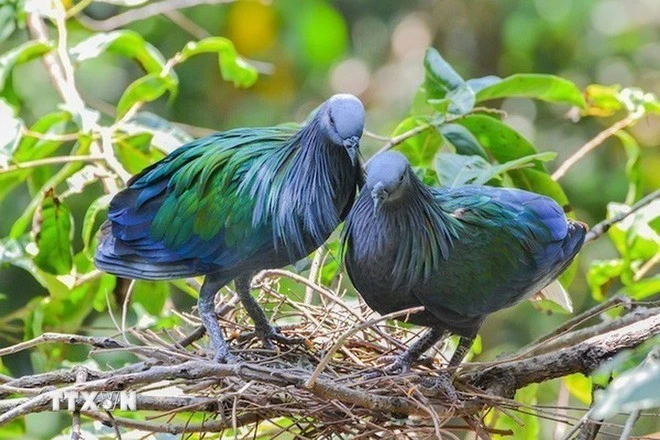
See more
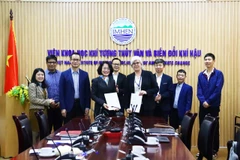
Vietnamese, Belgian institutes sign MoU on climate change response cooperation
This collaboration provides an opportunity for the two sides to jointly develop breakthrough solutions in four key areas, namely urban climate research, greenhouse gas emissions reduction, water resources management, and circular economy development.
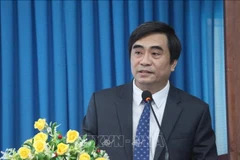
Int’l symposium on marine, fisheries science opens in Khanh Hoa
The 5th International Symposium on Marine & Fisheries Science and Technology focuses discussions on aquaculture technology, marine environment and climate change, sustainable fisheries and resource conservation, seafood processing and post-harvest technology; infrastructure, marine transport, and smart aquaculture; and marine economy and green tourism.

Vietnam contributes solutions to reduce air pollution
Key measures proposed included promoting clean energy transitions to reduce reliance on fossil fuels, developing sustainable transportation, cutting emissions from motor vehicles, managing industrial and household waste efficiently, and having stricter regulations on industrial emissions control.
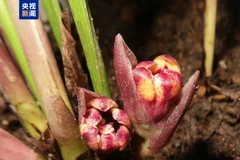
Six new Aspidistra species discovered in Vietnam – China border area
The newly discovered species comprise four from Guangxi Zhuang Autonomous Region and Guizhou province of China, as well as two from Ba Be National Park of Vietnam.
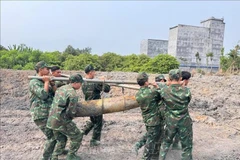
Over-200kg wartime bomb unearthed in Binh Phuoc
The bomb was identified as part of the MK series, measuring 1.5 to 2 metres in length and deeply buried underground, requiring the provincial command’s deployment of specialised personnel for its removal.
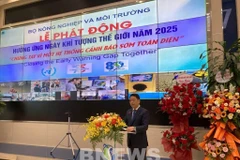
Vietnam observes World Meteorological Day 2025
Vietnam’s hydrometeorological sector has been optimising artificial intelligence (AI), big data, and digital transformation in monitoring and forecasting operations.
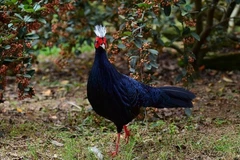
International efforts help preserve Vietnam pheasant
Belgium’s Antwerp Zoo will contribute two young birds and conduct genetic research to ensure the released population maintains healthy diversity.
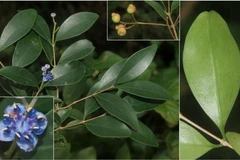
Three new plant species discovered in Nui Chua National Park
The newly discovered species are shrub-like smaller trees with floriferous branchlets called Sam cuong dai (Memecylon longipedunculatum), Diep ha chau Nui Chua (Nymphanthus adenophorus) and Long muc Nui Chua (Wrightia nuichuaensis). Their discovery was officially published in Phytotaxa, a leading international journal on plant taxonomy and biodiversity, on January 19, 2025.
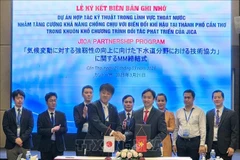
Can Tho, Fukuoka sign MoU to boost climate resilience
By leveraging Fukuoka’s advanced technologies, effective management models, and valuable lessons, Can Tho aims to adopt innovative solutions to improve its drainage system, ultimately fostering a more sustainable living environment for its residents.

Countdown to Earth Hour underway
This is an opportunity to showcase advanced technologies and products while reaffirming the commitment to developing and promoting clean energy in Vietnam.

It is time to reduce emission in livestock farming
The survey, which reveals its ranking of Asia’s most sustainability-conscious travellers, also informed that 77% is higher than the average for all Asian travellers, which stands at 68%.

Sustainable forest ecotourism helps promote economic growth, environmental preservation
Forest ecotourism stands out from traditional tourism by providing a direct and meaningful connection to nature.
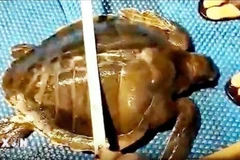
Binh Dinh: Sea turtle released back to natural habitat
A sea turtle, weighing about 12 kg, which was accidentally caught in the net of a local fishing vessel, has been released back to the sea in the south-central province of Binh Dinh.
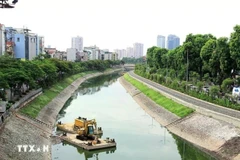
Hanoi aims to turn polluted To Lich River into green space
The Hanoi People’s Committee has also given in-principle approval to a wastewater system project in the West Lake area, with an estimated budget of over 99 billion VND (3.88 million USD) funded by Tay Ho district.
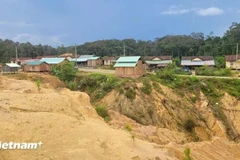
3.7-magnitude earthquake hits Kon Tum province’s Kon Plong district
According to the Centre for Earthquake Information and Tsunami Warning under the Vietnam Academy of Science and Technology’s Institute of Geophysics, the earthquake occurred at 12:50:24 pm at a depth of about 8.1km. The natural disaster risk level was rated as 0.
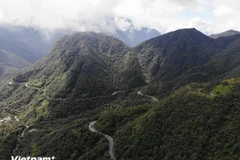
Vietnam, EU foster forestry ties with renewed commitment to sustainability
The VPA/FLEGT aims to promote the trade of timber products sourced from sustainably managed forests and harvested in line with the laws of the producing country.

Northern region faces more cold spells in March
The National Centre for Hydrometeorological Forecasting has highlighted two unusual weather patterns for March.
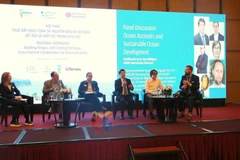
Workshop promotes resources accounting, sustainable blue economy development
Organised by the Ministry of Agriculture and Environment’s Institute Of Strategy and Policy on Natural Resources and Environment, the global forum on natural capital accounting, and the University of New South Wales, the event aimed to share experiences and develop ocean accounts at local, national, and regional levels.

‘Turn Off the Lights’ campaign returns in 2025 with green living message
This year’s campaign emphasises moving away from fast consumption lifestyles and promoting practical green actions rooted in love for the homeland.
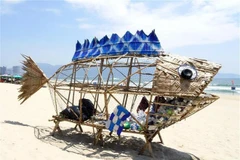
Urgent solutions needed to address plastic waste pollution: Experts
According to statistics from the Ministry of Agriculture and Environment, approximately 1.8 million tonnes of plastic waste are generated in Vietnam every year, with between 0.28 - 0.73 million tonnes of this waste ending up in the oceans. Only 27% of plastic waste is recycled or repurposed by businesses and facilities.


